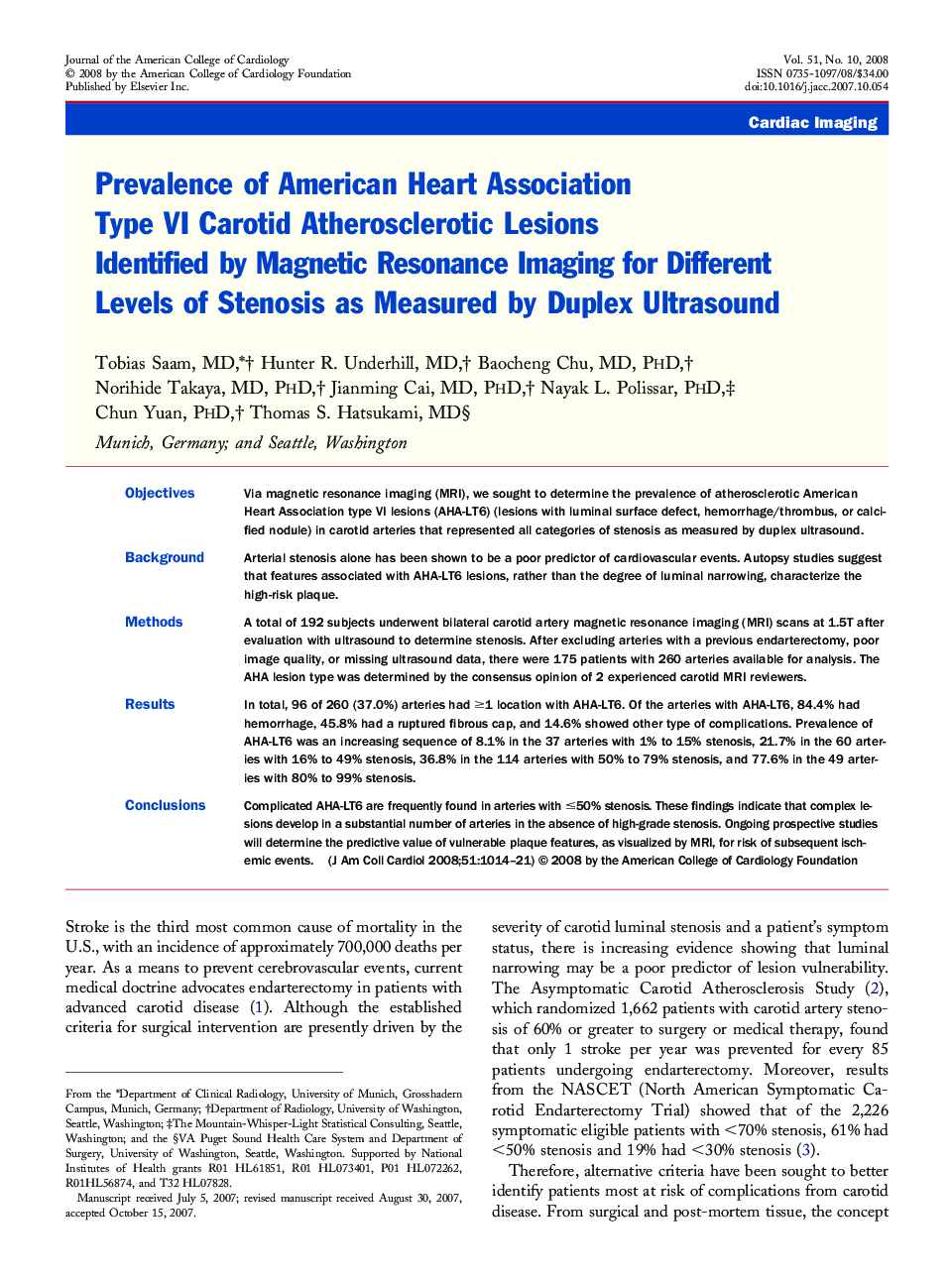| Article ID | Journal | Published Year | Pages | File Type |
|---|---|---|---|---|
| 2953600 | Journal of the American College of Cardiology | 2008 | 8 Pages |
ObjectivesVia magnetic resonance imaging (MRI), we sought to determine the prevalence of atherosclerotic American Heart Association type VI lesions (AHA-LT6) (lesions with luminal surface defect, hemorrhage/thrombus, or calcified nodule) in carotid arteries that represented all categories of stenosis as measured by duplex ultrasound.BackgroundArterial stenosis alone has been shown to be a poor predictor of cardiovascular events. Autopsy studies suggest that features associated with AHA-LT6 lesions, rather than the degree of luminal narrowing, characterize the high-risk plaque.MethodsA total of 192 subjects underwent bilateral carotid artery magnetic resonance imaging (MRI) scans at 1.5T after evaluation with ultrasound to determine stenosis. After excluding arteries with a previous endarterectomy, poor image quality, or missing ultrasound data, there were 175 patients with 260 arteries available for analysis. The AHA lesion type was determined by the consensus opinion of 2 experienced carotid MRI reviewers.ResultsIn total, 96 of 260 (37.0%) arteries had ≥1 location with AHA-LT6. Of the arteries with AHA-LT6, 84.4% had hemorrhage, 45.8% had a ruptured fibrous cap, and 14.6% showed other type of complications. Prevalence of AHA-LT6 was an increasing sequence of 8.1% in the 37 arteries with 1% to 15% stenosis, 21.7% in the 60 arteries with 16% to 49% stenosis, 36.8% in the 114 arteries with 50% to 79% stenosis, and 77.6% in the 49 arteries with 80% to 99% stenosis.ConclusionsComplicated AHA-LT6 are frequently found in arteries with ≤50% stenosis. These findings indicate that complex lesions develop in a substantial number of arteries in the absence of high-grade stenosis. Ongoing prospective studies will determine the predictive value of vulnerable plaque features, as visualized by MRI, for risk of subsequent ischemic events.
